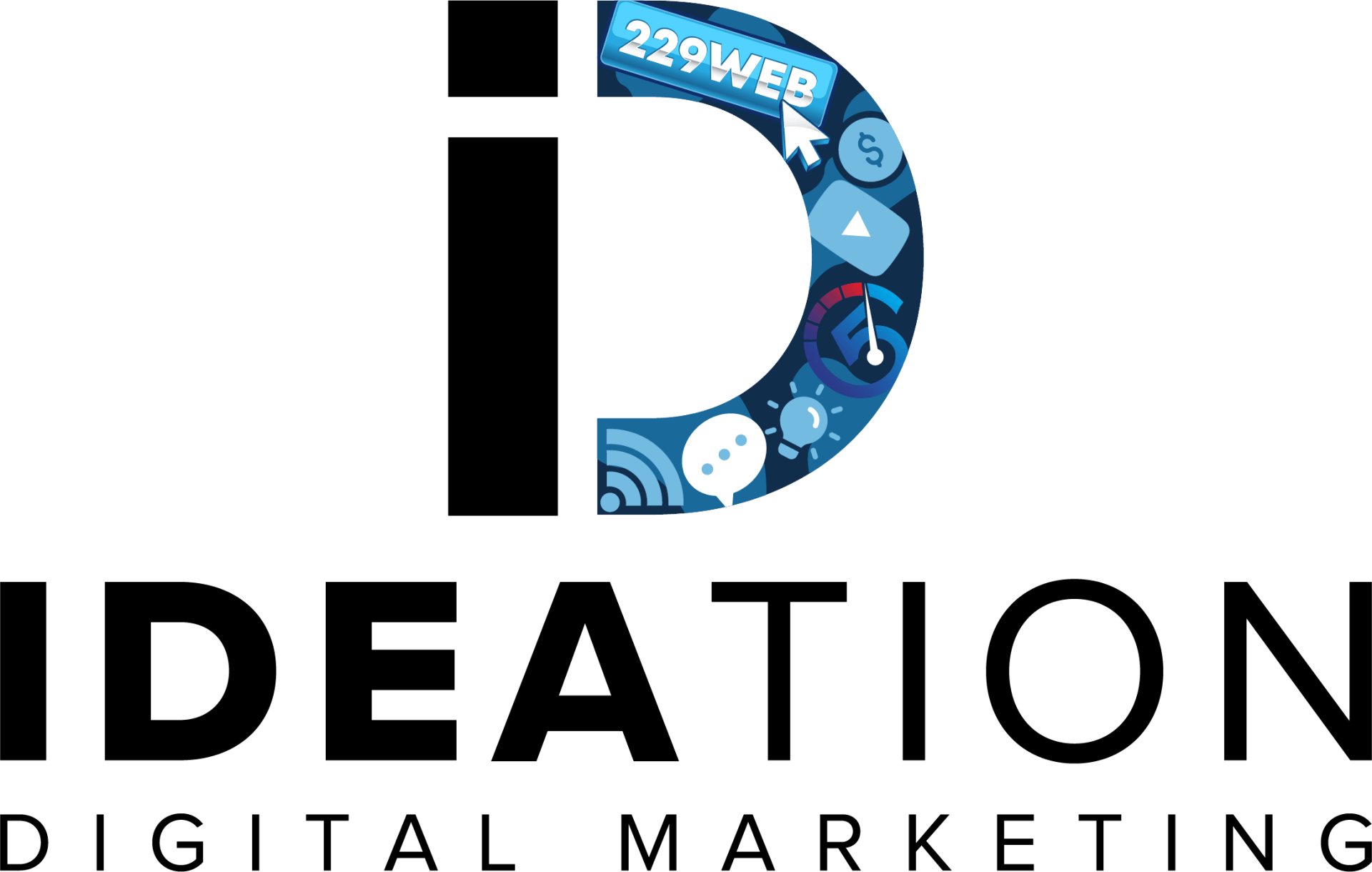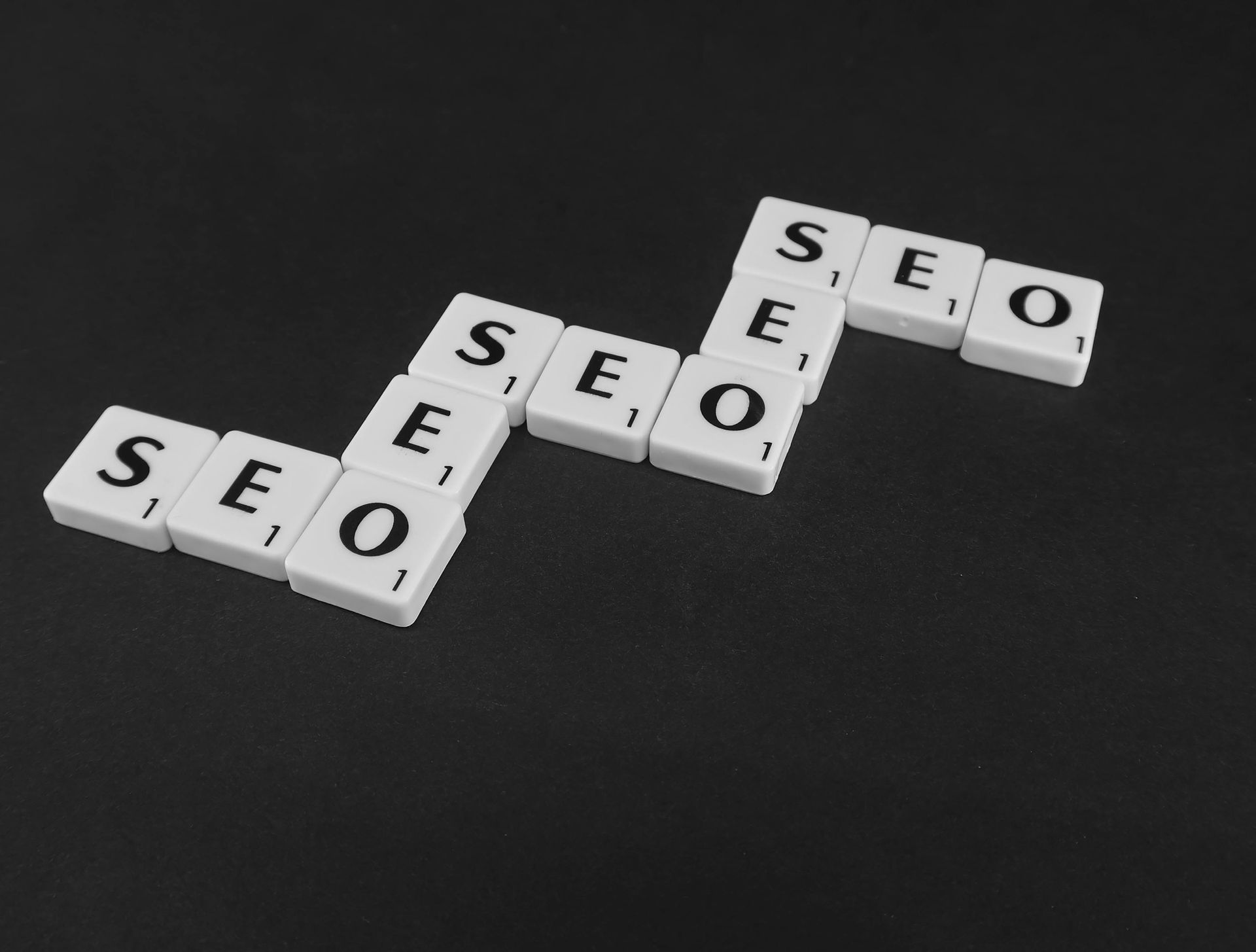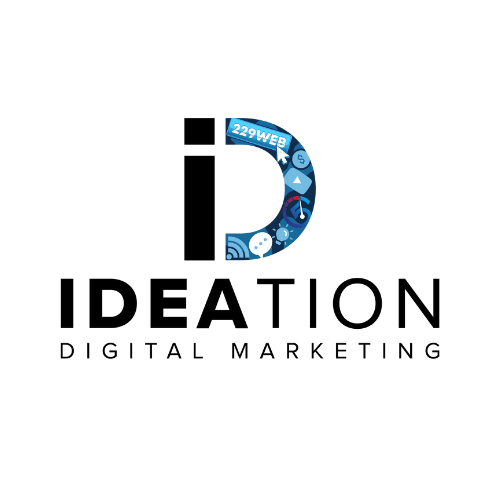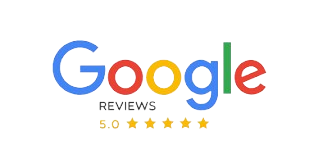Content Brainstorming Strategies: Effective Methods and Tools to Generate Winning Ideas

In today's competitive digital landscape, creating products that users love isn't just about functionality—it's about crafting experiences that engage, delight, and solve real problems. Product optimization for user experience (UX) has become a critical differentiator that separates market leaders from the rest of the pack.
This comprehensive guide explores proven techniques and best practices for optimizing your product's user experience. From foundational UX design principles to cutting-edge trends like AI-powered personalization, we'll cover actionable strategies that can transform your product's usability, engagement metrics, and conversion rates.
What Are the Core Principles of UX Design Best Practices?
Successful UX design is built on fundamental principles that prioritize the user's needs, goals, and context.
How Does User-Centered Design Enhance Product Usability?
User-centered design (UCD) places the user at the heart of the design process, resulting in products that are inherently more usable and valuable:
1. Empathy-Driven Development
•Begins with understanding user needs, goals, and pain points
•Requires designers to set aside assumptions and truly listen
•Creates solutions that address genuine user problems
•Builds products people actually want to use
•Reduces development waste on unwanted features
2. Iterative Design Process
•Involves continuous cycles of design, testing, and refinement
•Allows for early identification of usability issues
•Reduces the cost of making changes later in development
•Creates opportunities for user feedback throughout the process
•Results in progressively better user experiences
3. Contextual Understanding
•Considers the environment and circumstances of product use
•Accounts for different user scenarios and use cases
•Adapts to various devices, platforms, and situations
•Recognizes that context significantly impacts usability
•Creates more resilient and adaptable user experiences
4. Goal-Oriented Interactions
•Focuses on helping users accomplish specific tasks efficiently
•Eliminates unnecessary steps and friction
•Provides clear paths to completion
•Reduces cognitive load during complex processes
•Increases user satisfaction and task completion rates
5. Collaborative Approach
•Involves cross-functional teams including designers, developers, and stakeholders
•Incorporates diverse perspectives for more robust solutions
•Ensures technical feasibility of design decisions
•Aligns business goals with user needs
•Creates shared ownership of the user experience
When implemented effectively, user-centered design leads to products that feel intuitive and natural to use. Companies like Apple have built their reputation on this approach, creating products that anticipate user needs and provide seamless experiences that feel "just right" while maintaining high customer satisfaction scores.
Why Is Accessibility Essential in UX Optimization?
Accessibility isn't just a compliance requirement—it's a fundamental aspect of good UX design that benefits all users:
1. Inclusive Design Philosophy
•Ensures products are usable by people with diverse abilities
•Expands your potential user base significantly
•Creates better experiences for everyone, not just those with disabilities
•Demonstrates corporate social responsibility
•Builds brand loyalty among underserved communities
2. Legal and Ethical Considerations
•Complies with regulations like ADA, Section 508, and WCAG guidelines
•Reduces legal risks and potential lawsuits
•Fulfills ethical obligations to serve all users
•Aligns with growing consumer expectations for inclusivity
•Supports corporate diversity and inclusion initiatives
3. Technical Implementation Strategies
•Keyboard navigation for those who can't use a mouse
•Screen reader compatibility for visually impaired users
•Color contrast considerations for color-blind users
•Caption and transcript options for hearing-impaired users
•Responsive design for users with different devices and needs
4. Business Benefits
•Expands market reach to approximately 15% of the global population with disabilities
•Improves SEO through better semantic structure
•Enhances overall usability for all users
•Creates positive brand perception
•Often results in cleaner, more maintainable code
5. Testing and Validation
•Automated accessibility testing tools like Axe or WAVE
•Manual testing with assistive technologies
•User testing with individuals who have disabilities
•Ongoing monitoring and maintenance
•Accessibility statement and feedback mechanisms
Companies like Microsoft have made accessibility a cornerstone of their product development process, resulting in innovations like the Xbox Adaptive Controller that not only serve users with disabilities but also create new possibilities for all users, demonstrating how accessibility drives innovation and improves user experience design across the board.
What Role Does Information Architecture Play in UX Design?
Information architecture (IA) creates the structural foundation that helps users find information and complete tasks efficiently:
1. Content Organization
•Logical grouping of related information
•Hierarchical structure that reflects user priorities
•Clear categorization that matches mental models
•Scalable taxonomy that can grow with the product
•Consistent naming conventions across the platform
2. Navigation Systems
•Intuitive menus that reflect user expectations
•Clear wayfinding cues to indicate location
•Multiple pathways to important content
•Search functionality with relevant results
•Breadcrumbs and other orientation aids
3. Information Hierarchy
•Visual emphasis on important elements
•Progressive disclosure of complex information
•Prioritization based on user needs and business goals
•Clear relationships between content elements
•Balanced information density to prevent overwhelm
4. Labeling Systems
•Consistent, clear terminology
•User-centered language rather than internal jargon
•Descriptive but concise labels
•Internationalization and localization considerations
•Evolving vocabulary based on user feedback
5. Search Experience
•Robust search algorithms with relevant results
•Helpful filtering and sorting options
•Autocomplete and suggestion features
•Zero-results handling with alternatives
•Search analytics to improve functionality over time
Effective information architecture is often invisible when done well—users simply find what they need without thinking about the structure. Platforms like Spotify demonstrate excellent IA, allowing users to navigate millions of songs through intuitive categorization, powerful search, and personalized recommendations that enhance the overall user experience and engagement metrics.
How Can User Research Methods Improve Product Optimization?
User research provides the insights necessary to make informed UX decisions rather than relying on assumptions.
What Are the Most Effective Usability Testing Techniques?
Usability testing reveals how real users interact with your product and where they encounter difficulties:
1. Moderated Usability Testing
•Real-time observation of users completing specific tasks
•Ability to ask follow-up questions and probe deeper
•Rich qualitative insights into user thought processes
•Identification of unexpected usage patterns
•Immediate clarification of confusing behaviors
2. Unmoderated Remote Testing
•Larger sample sizes at lower cost
•Testing across different geographic locations
•Natural environment usage context
•Automated task completion metrics
•Video and audio recordings for later analysis
3. Guerrilla Testing
•Quick, informal testing in public places
•Rapid feedback on specific features or concepts
•Low-cost approach for early-stage validation
•Diverse participant demographics
•Immediate insights for iterative improvements
4. Eye-Tracking Studies
•Visual attention patterns and fixation points
•Identification of overlooked interface elements
•Heat map generation for visual hierarchy analysis
•Validation of information architecture effectiveness
•Insights into unconscious user behavior
5. Accessibility Testing
•Evaluation with assistive technologies
•Testing with users who have disabilities
•Compliance verification with accessibility standards
•Identification of barriers to universal access
•Insights that improve usability for all users
6. First-Click Testing
•Focus on the initial user interaction
•Validation of navigation intuitiveness
•Prediction of task completion success
•Quick identification of major usability issues
•Efficient testing of alternative designs
The most effective approach often combines multiple testing methods at different stages of product development. Companies like Airbnb regularly conduct usability testing to refine their booking process, resulting in higher conversion rates, improved user satisfaction, and enhanced customer experience metrics that drive business growth.
How Do User Interviews and Surveys Inform UX Decisions?
Direct user feedback through interviews and surveys provides crucial context for product optimization:
1. In-Depth User Interviews
•Rich qualitative insights into user needs and motivations
•Opportunity to explore unexpected topics that emerge
•Contextual information about usage environments
•Emotional aspects of the user experience
•Detailed stories that build empathy among the product team
2. Contextual Inquiry
•Observation of users in their natural environment
•Insights into real-world usage contexts
•Identification of workarounds and pain points
•Discovery of unmet needs and opportunities
•Understanding of integration with other tools and processes
3. Quantitative Surveys
•Statistical data from larger user samples
•Benchmarking metrics for tracking improvements
•Validation of patterns identified in qualitative research
•Segmentation analysis across user groups
•Prioritization data for feature development
4. Diary Studies
•Longitudinal insights into product usage over time
•Documentation of the complete user journey
•Capture of infrequent but significant issues
•Understanding of how usage evolves with familiarity
•Identification of retention factors and abandonment triggers
5. Focus Groups
•Group dynamics that spark discussion and insights
•Efficient collection of multiple perspectives
•Immediate reaction to concepts and prototypes
•Consensus and disagreement patterns
•Collaborative problem-solving opportunities
6. Customer Feedback Analysis
•Mining support tickets and customer communications
•Identifying recurring themes and pain points
•Quantifying issue frequency and impact
•Tracking sentiment changes over time
•Connecting feedback to specific product versions or features
The most successful product teams maintain ongoing research programs rather than conducting one-off studies. Continuous user research creates a feedback loop that keeps the product evolving in alignment with user needs and expectations, driving higher engagement metrics and customer satisfaction scores over time.
What Tools Facilitate Remote and In-Person User Testing?
The right tools can significantly enhance the efficiency and effectiveness of user research:
1. Remote Usability Testing Platforms
•UserTesting: Provides video recordings of users completing tasks
•Lookback: Enables live observation and interaction with test participants
•Maze: Offers quantitative metrics for prototype testing
•Optimal Workshop: Specializes in information architecture testing
•Userlytics: Provides comprehensive testing with diverse participant pools
2. Survey and Feedback Tools
•SurveyMonkey: Creates and analyzes various survey types
•Typeform: Designs engaging, conversational surveys
•Hotjar: Combines surveys with visual behavior analytics
•Qualtrics: Offers advanced survey logic and analysis
•Google Forms: Provides simple survey creation with good integration
3. Session Recording and Analytics
•Fullstory: Records and analyzes user sessions
•Mouseflow: Captures user journeys with heatmaps
•Crazy Egg: Visualizes click patterns and scroll depth
•Contentsquare: Provides advanced experience analytics
•Smartlook: Offers event-based recording and analysis
4. Prototyping Tools with Testing Features
•Figma: Includes prototype sharing and commenting
•InVision: Offers user testing capabilities within prototypes
•Adobe XD: Provides co-editing and feedback collection
•Axure: Creates highly interactive prototypes for testing
•Sketch: Integrates with various testing platforms
5. In-Person Testing Equipment
•Tobii: Provides eye-tracking hardware and software
•Morae: Captures and analyzes in-person testing sessions
•OBS Studio: Records screen and participant simultaneously
•One-way mirrors: Enables observation without interference
•Mobile device cameras: Records natural interaction with mobile interfaces
The selection of appropriate tools should be based on your specific research questions, budget constraints, and the fidelity of testing required. Many organizations use a combination of tools to create a comprehensive research ecosystem that supports continuous product optimization and user experience improvement.
How Does A/B Testing Drive UX Optimization and Conversion Rates?
A/B testing provides empirical data about which design variations perform better, removing guesswork from UX decisions.
What Is the A/B Testing Methodology for UX Elements?
A structured approach to A/B testing ensures reliable results that can confidently guide product optimization:
1. Hypothesis Formation
•Start with a clear, testable hypothesis
•Base hypotheses on user research or analytics insights
•Specify the element to test and expected outcome
•Connect the hypothesis to specific business or UX goals
•Prioritize tests with the highest potential impact
2. Test Design
•Create variations that isolate specific variables
•Determine appropriate sample sizes for statistical significance
•Set clear success metrics before launching
•Establish test duration based on traffic and conversion patterns
•Consider segmentation for more nuanced insights
3. Implementation Best Practices
•Use reliable A/B testing platforms
•Ensure proper tracking code implementation
•Test for technical issues before launching
•Consider device and browser compatibility
•Implement appropriate traffic allocation
4. Statistical Considerations
•Calculate required sample size before testing
•Understand statistical significance and confidence intervals
•Avoid stopping tests prematurely
•Be aware of external factors that might skew results
•Consider running tests multiple times for validation
5. Ethical Considerations
•Maintain consistent core functionality across variations
•Consider informing users about participation in tests
•Ensure compliance with privacy regulations
•Avoid testing that might harm user experience
•Be prepared to roll back changes that negatively impact users
Companies like Booking.com have built their success on rigorous A/B testing, running hundreds of simultaneous experiments to continuously optimize their user experience and drive higher conversion rates through data-driven decision making and systematic testing methodologies.
How Do You Analyze and Interpret A/B Test Results?
Proper analysis ensures that test results lead to valid conclusions and effective optimizations:
1. Quantitative Analysis
•Evaluate statistical significance (typically p < 0.05)
•Calculate confidence intervals for measured effects
•Consider practical significance beyond statistical significance
•Analyze secondary metrics for unintended consequences
•Segment results by user types, devices, or other variables
2. Qualitative Considerations
•Combine quantitative results with qualitative user feedback
•Consider the "why" behind the numbers
•Evaluate alignment with brand and UX principles
•Assess long-term implications beyond immediate metrics
•Consider maintenance and scalability of winning variations
3. Common Analysis Pitfalls
•Misinterpreting statistical significance
•Ending tests too early
•Ignoring segment-specific effects
•Focusing only on primary metrics
•Not accounting for novelty effects
4. Documentation and Knowledge Sharing
•Record detailed test results and conditions
•Document insights beyond simple win/lose outcomes
•Create a searchable repository of test results
•Share learnings across teams
•Build institutional knowledge about user preferences
5. Iterative Optimization
•Use test results to inform subsequent tests
•Combine winning elements for compound improvements
•Test variations of successful changes for further optimization
•Create a continuous testing roadmap
•Build on insights rather than testing random ideas
Effective analysis goes beyond declaring winners and losers—it builds a deeper understanding of user behavior and preferences that informs the overall product strategy and future optimization efforts, leading to continuous improvement in user experience metrics and business outcomes.
Which UI Components Benefit Most From A/B Testing?
Some interface elements have a disproportionate impact on user experience and conversion rates:
1. Call-to-Action Elements
•Button text, color, size, and placement
•Action-oriented language variations
•Visual emphasis techniques
•Mobile vs. desktop optimization
•Primary vs. secondary action distinction
2. Forms and Input Fields
•Field order and grouping
•Inline validation methods
•Single vs. multi-step approaches
•Field label positioning
•Required field indicators
3. Navigation Elements
•Menu structure and terminology
•Search functionality placement
•Filter and sorting options
•Breadcrumb implementation
•Mobile navigation patterns
4. Content Presentation
•Headline formulations
•Content hierarchy and chunking
•Image selection and placement
•Long-form vs. concise content
•Formatting and typography choices
5. Product and Pricing Display
•Feature highlighting approaches
•Pricing presentation formats
•Comparison table layouts
•Social proof placement
•Scarcity and urgency indicators
6. Onboarding Experiences
•Tutorial approaches
•Progressive disclosure techniques
•First-time user experiences
•Feature discovery methods
•Value proposition communication
By focusing A/B testing efforts on these high-impact elements, product teams can achieve significant improvements in user experience and business metrics with relatively modest testing investments, driving higher engagement rates and conversion optimization through systematic experimentation.
What Techniques Enhance User Engagement in Product Optimization?
Engagement is a critical metric that indicates how effectively your product captures and maintains user interest.
How Does Personalization Improve User Interaction?
Tailoring the user experience to individual preferences and behaviors creates more relevant and engaging interactions:
1. Content Personalization
•Recommending relevant content based on past behavior
•Adapting messaging to user interests and needs
•Displaying personalized dashboards and views
•Highlighting features relevant to specific user segments
•Creating custom learning paths based on skill level
2. Behavioral Personalization
•Adapting interfaces based on usage patterns
•Remembering user preferences and settings
•Simplifying frequently used workflows
•Suggesting shortcuts for common actions
•Providing contextual help based on user activity
3. Contextual Personalization
•Adapting to user's location and time zone
•Considering device capabilities and limitations
•Responding to environmental factors
•Adjusting to connection speed and quality
•Recognizing usage context (work vs. personal)
4. Implementation Approaches
•Rule-based personalization for straightforward cases
•Machine learning for complex pattern recognition
•Hybrid systems combining explicit preferences and implicit behavior
•Progressive personalization that increases with user engagement
•Transparent personalization that users can adjust or override
5. Ethical Considerations
•Balancing personalization with privacy concerns
•Providing clear opt-out mechanisms
•Explaining personalization logic to users
•Avoiding filter bubbles that limit exposure to new content
•Ensuring algorithmic fairness across user segments
Companies like Netflix and Spotify have demonstrated the power of personalization to drive engagement, with recommendation engines that keep users coming back by continuously delivering relevant content tailored to individual preferences, significantly improving user retention metrics and customer lifetime value.
What Are Micro-Interactions and Their Impact on UX?
Micro-interactions are small, purposeful moments within a product that enhance the user experience through feedback, guidance, and delight:
1. Functional Micro-Interactions
•Form field validation feedback
•Button state changes on hover or click
•Progress indicators during loading
•Confirmation animations after actions
•Error messages with recovery options
2. Communicative Micro-Interactions
•Subtle cues that guide user attention
•Tooltips that provide contextual information
•Status updates that inform without interrupting
•Notification systems with appropriate urgency
•System status indicators
3. Emotional Micro-Interactions
•Playful animations that create delight
•Encouraging messages after task completion
•Personality-infused error states
•Celebration moments for achievements
•Brand-aligned visual and motion design
4. Design Principles for Micro-Interactions
•Purposeful: Solving a specific user need
•Subtle: Enhancing without overwhelming
•Consistent: Following established patterns
•Efficient: Minimizing cognitive load
•Contextual: Appearing at the right moment
5. Implementation Best Practices
•Keep animations brief (typically under 400ms)
•Ensure accessibility with alternative feedback methods
•Consider performance impact on different devices
•Allow users to disable animations if desired
•Test micro-interactions on actual devices
When designed thoughtfully, micro-interactions create a more polished, responsive feel that significantly enhances perceived quality and user satisfaction. Products like Slack use micro-interactions extensively to create an experience that feels alive and responsive while providing clear feedback on user actions, improving overall user experience design and engagement metrics.
How Can Content Strategy Support Better User Engagement?
Content strategy ensures that the right information reaches users at the right time, enhancing engagement and comprehension:
1. User-Centered Content Planning
•Mapping content to user journey stages
•Addressing specific user questions and needs
•Creating content hierarchies based on importance
•Balancing comprehensive information with simplicity
•Considering different information-seeking behaviors
2. Voice and Tone Guidelines
•Establishing consistent brand personality
•Adapting tone to different contexts and user states
•Creating connection through conversational language
•Avoiding jargon and technical terminology
•Maintaining appropriate formality levels
3. Content Formats and Presentation
•Using appropriate formats for different content types
•Breaking complex information into digestible chunks
•Employing visual content to enhance understanding
•Creating scannable layouts with clear hierarchies
•Designing for multiple device contexts
4. Content Governance
•Establishing ownership and maintenance processes
•Creating style guides and content standards
•Implementing review and approval workflows
•Planning for content updates and archiving
•Measuring content effectiveness
5. Contextual Help and Documentation
•Embedding assistance within the user flow
•Creating progressive levels of help content
•Providing searchable knowledge bases
•Using video and interactive tutorials
•Offering contextual tips and guidance
Effective content strategy creates a cohesive narrative throughout the user experience, reducing friction and helping users accomplish their goals. Companies like Mailchimp demonstrate excellence in this area, with clear, consistent, and helpful content that guides users through complex processes while maintaining a distinctive brand voice that enhances user engagement and satisfaction.
How Do Design Systems Support Scalable UX Optimization?
Design systems provide a structured approach to creating consistent, high-quality user experiences across products and platforms.
What Are the Benefits of Integrating Design Systems in Product UX?
Design systems offer numerous advantages for both users and product teams:
1. Consistency Benefits
•Unified user experience across products and features
•Reduced cognitive load through familiar patterns
•Consistent terminology and interaction models
•Cohesive brand identity and visual language
•Predictable behavior that builds user confidence
2. Efficiency Advantages
•Faster design and development through reusable components
•Reduced decision fatigue for designers
•Streamlined implementation and QA processes
•Easier onboarding for new team members
•More time for solving unique design challenges
3. Quality Improvements
•Pre-tested components with proven usability
•Accessibility built into base elements
•Performance optimization at the component level
•Consistent responsive behavior across devices
•Reduced design and development errors
4. Collaboration Enhancements
•Shared language between designers and developers
•Clearer communication about design intentions
•Reduced handoff friction and implementation questions
•Better cross-functional alignment
•Improved stakeholder understanding
5. Scalability Support
•Easier maintenance across growing product portfolios
•Efficient updates to multiple products simultaneously
•Consistent integration of new brand elements
•Simplified platform expansion
•Sustainable growth without quality degradation
Organizations like Airbnb, IBM (Carbon), and Google (Material Design) have demonstrated how design systems can transform product development, enabling teams to work more efficiently while delivering more consistent and polished user experiences that drive higher customer satisfaction and engagement metrics.
How Do Design Systems Ensure Consistency and Usability?
The structure and components of design systems are specifically engineered to maintain consistency while allowing for appropriate flexibility:
1. Component Architecture
•Atomic design methodology (atoms, molecules, organisms)
•Modular components with clear purposes
•Consistent props and configuration options
•Documented component relationships and dependencies
•Versioning strategy for evolution without breaking changes
2. Design Tokens and Variables
•Centralized color palettes and typography scales
•Spacing and sizing systems
•Animation timing and easing presets
•Responsive breakpoints and grid definitions
•Semantic naming conventions
3. Pattern Libraries
•Documented interaction patterns for common tasks
•Alternative patterns for different contexts
•Decision trees for pattern selection
•Usage guidelines and best practices
•Examples of correct and incorrect implementations
4. Governance Processes
•Component proposal and approval workflows
•Quality standards for new additions
•Deprecation strategies for outdated elements
•Contribution guidelines for team members
•Regular review and maintenance cycles
5. Documentation and Resources
•Interactive component examples
•Implementation guidelines for designers and developers
•Accessibility compliance information
•Performance considerations
•Version history and change logs
Effective design systems strike a balance between rigid standards that ensure consistency and flexible guidelines that allow for innovation and context-specific solutions. This balance is critical for creating experiences that feel cohesive without becoming generic or constraining creativity, ultimately supporting better user experience design and product optimization across platforms.
How Can Conversion Rate Optimization (CRO) Be Achieved Through UX Techniques?
CRO and UX share the goal of creating more effective digital experiences, though with different primary metrics.
What UX Factors Most Influence Conversion Rates?
Certain UX elements have a disproportionate impact on user decisions and conversion actions:
1. Trust Signals
•Clear security indicators and certifications
•Transparent pricing and policies
•Authentic testimonials and reviews
•Professional design and error-free content
•Brand consistency across touchpoints
2. Friction Reduction
•Streamlined forms with minimal fields
•Clear progress indicators for multi-step processes
•Smart defaults that reduce user effort
•Inline validation to prevent submission errors
•Guest checkout options and social login
3. Value Communication
•Clear, benefit-focused value propositions
•Effective feature explanation and demonstration
•Compelling visuals that showcase value
•Social proof at decision points
•Objection handling through content
4. Decision Architecture
•Strategic option presentation
•Effective comparison tools
•Clear call-to-action hierarchy
•Appropriate use of defaults and recommendations
•Balanced information density
5. Mobile Optimization
•Touch-friendly interface elements
•Streamlined mobile checkout processes
•Performance optimization for varying connections
•Appropriate form factor adaptations
•Cross-device continuity
6. Performance Factors
•Page load speed optimization
•Perceived performance improvements
•Smooth animations and transitions
•Responsive interaction feedback
•System stability and error handling
Companies like Amazon continuously refine these elements through rigorous testing, resulting in checkout processes and product pages that are optimized for conversion while maintaining a positive user experience, driving higher conversion rates and improved return on investment for their digital properties.
How Do User Behavior Analytics Inform CRO Strategies?
Analytics provide the data foundation for effective conversion optimization:
1. Funnel Analysis
•Identifying drop-off points in conversion paths
•Comparing performance across segments and devices
•Measuring impact of changes on completion rates
•Visualizing user journeys through critical processes
•Quantifying economic impact of funnel improvements
2. Behavioral Analysis
•Heatmaps showing click, tap, and scroll patterns
•Session recordings of user interactions
•Form analytics revealing completion challenges
•Navigation path analysis
•Engagement metrics by page and feature
3. Segmentation Insights
•Conversion differences across user segments
•Device and platform-specific behavior patterns
•New vs. returning user comparison
•Geographic and demographic variations
•Traffic source performance differences
4. Technical Performance Correlation
•Page speed impact on conversion rates
•Error frequency and abandonment correlation
•Device-specific technical issues
•Connection speed influence on completion
•JavaScript and plugin performance effects
5. Experiment Analysis
•A/B and multivariate test results
•Feature adoption and usage metrics
•Personalization performance data
•Long-term impact of UX changes
•Interaction between multiple optimizations
Tools like Google Analytics, Hotjar, and Mixpanel provide the data necessary to move beyond gut feelings and design trends, allowing teams to make evidence-based decisions about which UX improvements will most effectively drive conversion improvements and optimize the user journey for better business outcomes.
What Are the Emerging Trends in Product Optimization for UX?
The field of UX is continuously evolving with new technologies and changing user expectations.
How Is AI-Powered UX Personalization Changing Optimization?
Artificial intelligence is transforming how products adapt to individual users:
1. Predictive Personalization
•Anticipating user needs before explicit requests
•Recommending next actions based on behavior patterns
•Dynamically adjusting interfaces to usage patterns
•Preloading content likely to be needed
•Suggesting shortcuts based on repeated behaviors
2. Natural Language Interfaces
•Conversational UI for complex interactions
•Voice-activated features and commands
•Sentiment analysis for emotional response
•Context-aware assistance
•Multilingual support without manual translation
3. Behavioral Pattern Recognition
•Identifying user expertise levels automatically
•Detecting frustration and offering assistance
•Recognizing task abandonment patterns
•Adapting to individual learning curves
•Identifying opportunities for workflow optimization
4. Visual Recognition Applications
•Image-based search capabilities
•Automatic alt text generation for accessibility
•Content moderation and filtering
•Object recognition in uploaded images
•Augmented reality interfaces
5. Ethical and Privacy Considerations
•Transparent AI decision-making
•User control over personalization levels
•Privacy-preserving personalization techniques
•Avoiding algorithmic bias in recommendations
•Balancing automation with user agency
Companies like Netflix are pioneering AI-powered UX, with recommendation systems that continuously learn from user behavior to create increasingly personalized experiences that drive engagement and satisfaction, setting new standards for user experience design and personalization in digital products.
What Role Does Voice User Interface (VUI) Design Play in UX?
Voice interfaces are creating new paradigms for interaction design:
1. Conversational Design Principles
•Natural dialogue flows and turn-taking
•Personality and tone consistency
•Error recovery and graceful fallbacks
•Context maintenance across interactions
•Appropriate confirmation and feedback
2. Multimodal Integration
•Combining voice with visual and touch interfaces
•Choosing appropriate modality for different tasks
•Seamless transitions between interaction modes
•Complementary information across modalities
•Accessibility benefits of multiple input options
3. Voice-Specific Usability Considerations
•Command discoverability challenges
•Memory load reduction techniques
•Handling ambient noise and recognition errors
•Providing appropriate feedback without screens
•Privacy considerations in shared spaces
4. Voice Analytics and Optimization
•Measuring completion rates for voice interactions
•Analyzing common failure points and misinterpretations
•Testing different prompts and response formats
•Optimizing for various accents and speech patterns
•Continuous improvement through usage data
5. Implementation Approaches
•Custom voice assistant development
•Integration with existing platforms (Alexa, Google Assistant)
•Voice search optimization
•Voice-enabled help and support features
•Voice navigation for complex interfaces
As voice technology continues to mature, companies like Google are creating more natural and capable voice interfaces that complement traditional GUI interactions, particularly in contexts where hands-free operation is beneficial, expanding the possibilities for user experience design and accessibility.
Why Is Accessibility Increasingly Critical in Modern UX Design?
Accessibility has evolved from a compliance requirement to a core design principle:
1. Inclusive Design Evolution
•Shift from compliance-focused to experience-focused
•Recognition of accessibility as innovation driver
•Growing understanding of disability as contextual
•Expansion beyond traditional disability categories
•Integration with mainstream UX best practices
2. Business Drivers
•Expanding market reach to over 1 billion people with disabilities
•Aging population with increasing accessibility needs
•Legal requirements with growing enforcement
•Public sector procurement requirements
•Brand reputation and social responsibility
3. Technical Advancements
•Improved assistive technology integration
•Better development tools and testing options
•Automated accessibility checking in development workflows
•Standardized ARIA roles and attributes
•Native platform support for accessibility features
4. Mobile and Emerging Technology Considerations
•Touch interface accessibility challenges
•Voice interface opportunities for visual impairments
•AR/VR accessibility considerations
•IoT device accessibility
•Wearable technology as assistive devices
5. Organizational Approaches
•Accessibility champions and expertise development
•Integrated testing with users who have disabilities
•Accessibility requirements in design systems
•Regular accessibility audits and monitoring
•Transparent accessibility roadmaps and statements
Organizations like Microsoft have demonstrated that prioritizing accessibility drives innovation that benefits all users, such as captioning features that help everyone in noisy environments or voice controls that provide convenience beyond their accessibility benefits, showing how inclusive design principles can enhance the overall user experience for everyone.
Conclusion: Creating Exceptional User Experiences Through Optimization
Product optimization for UX is not a one-time project but an ongoing commitment to understanding users and continuously improving their experience. The most successful products combine:
1.Solid UX foundations based on user-centered design principles
2.Data-driven decision making through research and analytics
3.Systematic testing and validation of design hypotheses
4.Consistent implementation supported by design systems
5.Forward-looking adoption of emerging technologies and trends
By implementing the techniques and best practices outlined in this guide, you can create products that not only meet user needs but exceed expectations, driving engagement, conversion, and loyalty in increasingly competitive markets.
The journey to exceptional UX is continuous, requiring ongoing attention to user feedback, market trends, and emerging technologies. Organizations that commit to this journey create products that users genuinely love—and that deliver measurable business results through improved user experience metrics, higher engagement rates, and stronger customer loyalty.
Ready to optimize your product's user experience? Contact our UX design team to learn how we can help you implement these best practices and create exceptional digital experiences for your users.
Need help with conversion rate optimization? Our digital strategy services can help you identify opportunities to improve user experience and drive better business outcomes.
Looking to implement more effective user research? Our analytics and reporting services provide the data foundation for informed UX decisions.
Want to create more engaging content as part of your UX strategy? Our content marketing team specializes in creating user-centered content that enhances the overall experience.













